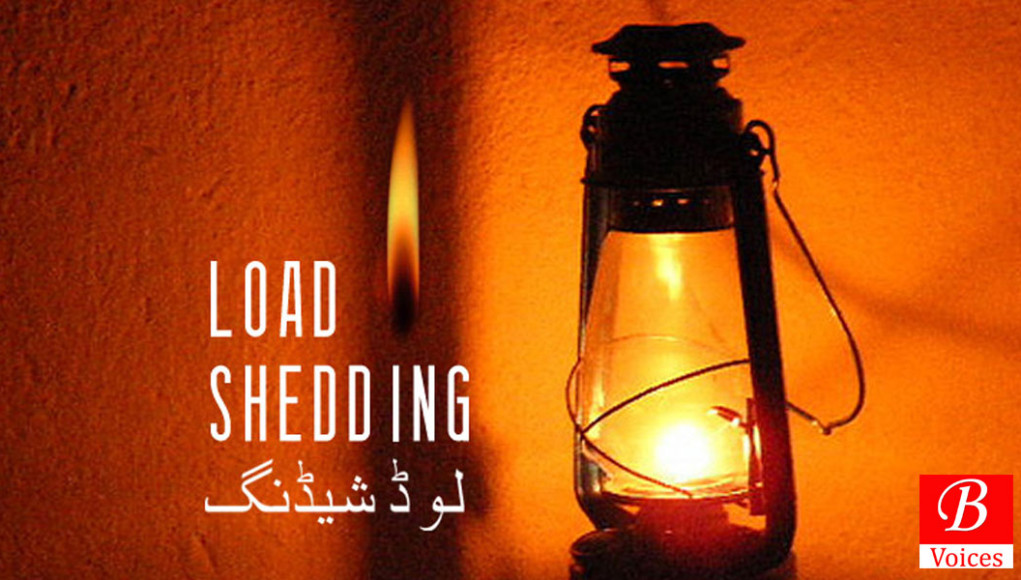Maryam Nawaz Sharif’s May 29 tweet: “Probably the hottest days of the year and no loadshedding. Thank you Nawaz Sharif”, led to a lot of criticism on social media.
Probably the hottest days of the year and no load shedding. Thank you Nawaz Sharif.
— Maryam Nawaz Sharif (@MaryamNSharif) May 29, 2018
On Twitter, particularly, supporters of Nawaz Sharif outrightly denied all claims of any major loadshedding being carried out in the country, whereas anti-Nawaz tweeps exaggerated the problem to the extent of absurdity. However, there is no denying that power cuts are still a major problem, at least in Balochistan.
Loadshedding, which is the fancy term we use for the suspension of electricity, is the same in Balochistan today as it was in 2013, when the PML-N came into power. In 2013, apart from Quetta, all urban centres of Balochistan were facing around 12 hours of power cuts, and the rural centres around 18 hours. Same is the case in the summer of 2018. Quetta faces about six to eight hours of loadshedding, barring the Red Zone and a few ‘other’ VIP areas. The province was supplied 650 MW of electricity against the demand of 1,650 MW, and the equation has not changed even now.
In 2013, the PML-N had claimed to end loadshedding in just six months. They have failed to achieve this over-ambitious target. However, in order to gain political mileage, the PML-N government declared Pakistan to have been freed of loadshedding on December 4, 2017. This claim soon proved to be wrong. The government then came up with the explanation that out of 8,600 feeders installed across the country, 5,297 had been declared loadshedding-free. But this claim too fell flat as loadshedding escalated when the temperature begun to rise.
Moreover, during the period the country was not experiencing any power cuts, only 12 out of the 660 feeders in Balochistan were declared loadshedding-free. The explanation of the government was that they cannot declare those feeders loadshedding-free where line losses are more than 10 percent. One of the two major reasons for line losses is electricity theft. And the government and private power companies choose to punish the entire population for the 10-15 percent of electricity thieves in the area.
This is a modern form of the Frontier Crimes Regulation-style collective punishment. Ideally, the government should only disconnect power supply of individuals who are involved in electricity theft, rather than suspend electricity to the entire feeder. But the authorities choose to do the latter, since it is the easier option, and disregard the individual rights of the citizens.
Another problem with line losses are the obsolete electricity transmission lines. The transmission lines that carry electricity from power generation plants to power supply feeders have lived their useful life and now result in the loss of power during transmission. Khawaja Asif, former federal minister for water and power, while speaking in the National Assembly said that electricity transmission lines in Balochistan cannot transmit more than 650-700 MW of electricity. Hence, we cannot supply more electricity to the province. No efforts were made by the former government to upgrade electricity transmission lines in Balochistan, despite the fact that the province lies at the centre of CPEC.
This problem was also admitted by officials of the power division sector, during the proceedings of the Special Committee of the Senate on Power held in the last week of May. The officials revealed that a massive investment of $40-50 billion was required to upgrade the transmission and distribution system to end loadshedding. This means that the government will first have to repair the transmission lines and then focus on generating power. This arrangement can ensure that transmission lines are capable of transmitting the additional electricity generated by the newly established power plants.
Just before the end of the government’s tenure, former prime minister Shahid Khaqan Abbasi boasted that there was no gap in the demand and generation of electricity in the country. He failed to mention the gap between the electricity generated and the capacity of the transmission lines to transmit electricity. During its five-year tenure, the PML-N government did not pay any attention to upgrading transmission lines, instead, opted for politically and financially lucrative business of establishing new power plants. As a result, the government came nowhere near ending loadshedding across the country.
However, elections are again right around the corner, and power cuts will remain a major election campaign issue. The PML-N’s failure to fully end loadshedding will be used as a punching bag by other parties. But the fact is that both the PTI and PPP also do not have any plans in their manifestos of upgrading the transmission lines.
The world is approaching the third decade of the 21st century, but for the people of Pakistan, the dream of 24-hour uninterrupted electricity supply is still far from coming true. The main reason for this is that the fragile electoral system of the country is not driven by accountability.
Originally published in The News
Disclaimer: Views expressed in this article are those of the author and Balochistan Voices not necessarily agrees with them.
Share your comments!








